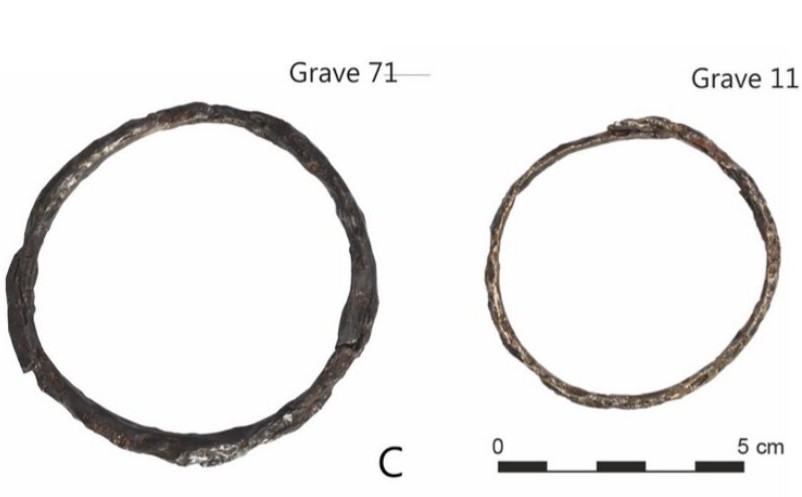Keep our news free from ads and paywalls by making a donation to support our work!

Notes from Poland is run by a small editorial team and is published by an independent, non-profit foundation that is funded through donations from our readers. We cannot do what we do without your support.
A new study has found a rare type of meteoric iron used in artefacts discovered at two cemeteries in Poland dating back more than 2,500 years. The findings mean that the Polish sites now rank among the most concentrated sources of meteoric iron artefacts globally, comparable to some in Egypt.
The study – published in the Journal of Archaeological Science: Reports – analysed objects discovered at two Iron Age cemeteries located near the city of Częstochowa in southern Poland.
The burial sites belonged to the so-called Lusatian Culture and have been dated to a period of around 750 to 600 BC.
A team of researchers analysed 26 iron items – including bracelets, ankle rings, knives, spearheads and necklaces – from the archaeological sites. They found that four of the artefacts – three bracelets and a pin – were crafted using meteoric iron.
Based on the high nickel levels in the iron, the researches concluded that the artefacts had been made from an ataxite meteorite, a rare iron meteorite.
The researchers believe that the meteoric iron was sourced locally in contrast to terrestrial iron, which was usually obtained at the time from the Balkans or Alps via trade.
A Roman sword almost 2,000 years old has been discovered buried in Poland by a pair of history enthusiasts.
The weapon, almost one metre long, is likely a double-edged spatha used by Roman cavalry and "no one can quite say how or why it ended up here" https://t.co/D256z4QfPk
— Notes from Poland 🇵🇱 (@notesfrompoland) February 13, 2025
“There is a high likelihood that there was a witnessed [meteor] fall rather than a lucky find,” one of the study’s authors, Albert Jambon of Sorbonne University, told the Phys.org website. He noted that if a meteorite falls unnoticed, it may be impossible to recover its pieces from the ground after it settles.
The objects made of meteoric iron were found in various graves, including those of women and children. The randomness of the finds suggests that the material was not perceived as particularly valuable by the people of the Lusatian culture.
Meanwhile, the study also identified banding patterns on the metal, which may have been done on purpose to create a pattern. If confirmed, that would make this the oldest known patterned iron, significantly predating Damascus steel, notes Phys.org.
Analysis of prehistoric human bones discovered in a cave in Poland has confirmed cannibalistic practices among the people who inhabited it 18,000 years ago https://t.co/pdNFNbDquL
— Notes from Poland 🇵🇱 (@notesfrompoland) February 10, 2025

Notes from Poland is run by a small editorial team and published by an independent, non-profit foundation that is funded through donations from our readers. We cannot do what we do without your support.
Main image credit: Jambon et al. 2025

Agata Pyka is an Assistant Editor at Notes from Poland. She specialises in Central and Eastern European affairs, cybersecurity, and investigative reporting. She holds a master’s degree in political communication from the University of Amsterdam, and her work has appeared in Euractiv, the Balkan Investigative Reporting Network (BIRN), and The European Correspondent, among others.



















